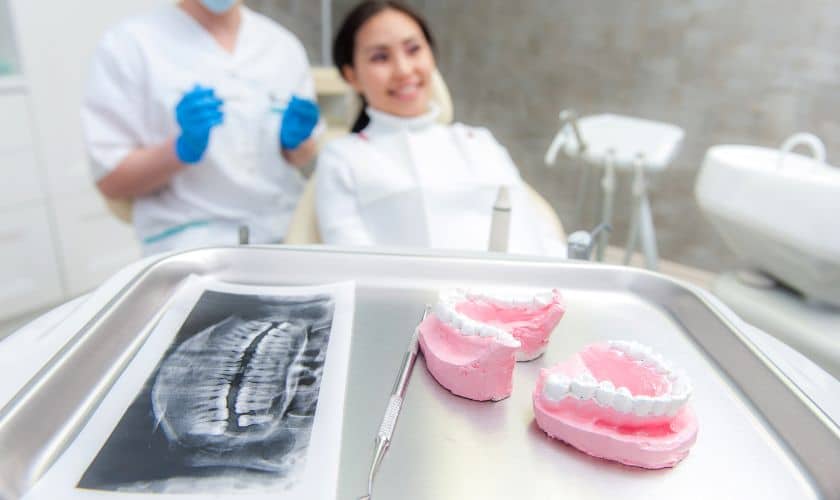
Dental Implant Surgery Side Effects: How to Manage Pain and Discomfort
Are you considering dental implant surgery? While this procedure is a great way to restore your smile and improve your oral health, some side effects come with it. Pain and discomfort are common after the surgery, but don’t let that deter you from getting the treatment you need. In this blog post, we’ll discuss how to manage these side effects so that you can enjoy all the benefits of dental implants without any unnecessary discomfort. So sit back, relax, and let’s dive in!
Introduction to Dental Implants
Dental implants are a popular and effective way to replace missing teeth. However, like any surgery, there is the potential for dental implant surgery side effects. The most common side effect is pain and discomfort at the implant site. This is usually mild and can be managed with over-the-counter pain medication. Other potential side effects include infection, bleeding, and swelling. These are also typically mild and can be managed with home care and over-the-counter medication. more serious side effects are rare but can include nerve damage, sinus problems, and problems with your natural teeth. If you experience any of these side effects, it’s important to contact your dentist or oral surgeon right away.
What are the Side Effects of Dental Implant Surgery?
Dental implant surgery is a major oral surgery that carries with it several potential side effects. The most common side effect of dental implant surgery is pain and discomfort. This is to be expected, as the surgery involves cutting into the gums and bones to place the implants. However, there are several ways to manage this pain and discomfort so that it does not interfere with your daily life.
The first step in managing pain and discomfort from dental implant surgery is to take over-the-counter pain medication as directed by your surgeon or dentist. This will help to alleviate some of the pain and make it more tolerable. It is also important to ice the surgical area for at least 24 hours after the procedure. This will help to reduce swelling and further ease pain.
Another way to manage pain and discomfort after dental implant surgery is to eat soft foods for a few days following the procedure. Avoiding hard or crunchy foods will minimize any irritation or inflammation of the surgical site. Additionally, be sure to drink plenty of fluids, as this will also help reduce swelling.
If you are still experiencing pain and discomfort after trying these self-care measures, contact your surgeon or dentist for further guidance on how to manage your symptoms.
How to Manage Pain and Discomfort after Dental Implant Surgery
After having dental implant surgery, it is normal to experience some pain and discomfort. Here are some tips on how to manage pain and discomfort:
Take pain medication as prescribed by your dentist or oral surgeon.
Apply ice to the surgical area for 20 minutes at a time, several times a day.
Eat soft foods and avoid chewing hard foods or using straws.
Try not to touch or disturb the surgical area with your tongue or fingers.
Brush your teeth gently and avoid using mouthwash for the first few days.
What is Invisalign and How Does it Work?
Invisalign is a clear, custom-made aligner that is used to straighten teeth. It is virtually invisible and can be removed for eating, drinking, brushing, and flossing. Invisalign gradually moves your teeth into place over time and is effective in treating a variety of dental problems.
To begin treatment, your dentist or orthodontist will take impressions of your teeth which are used to create a custom treatment plan for you. Once your aligners are ready, you will be given a new set to wear every two weeks. Each new set of aligners will move your teeth slightly until they are eventually in the desired position.
The average treatment time with Invisalign is about 12 months, but this can vary depending on the individual case. Most people report little to no discomfort when wearing Invisalign aligners and find them more comfortable than traditional braces.
If you are considering Invisalign treatment, talk to your dentist or orthodontist to see if it is right for you.
Pros and Cons of Invisalign Versus Braces
Invisalign and braces are both popular orthodontic treatments that can correct a wide variety of dental problems. But how do you know which one is right for you? Here, we’ll take a look at the pros and cons of Invisalign versus braces so you can make an informed decision.
Pros of Invisalign:
1. Invisalign is almost invisible, so people will hardly notice that you’re wearing them.
2. You can remove Invisalign aligners for eating and brushing your teeth, so there’s no need to change your diet or oral hygiene routine.
3. Invisalign treatment is typically shorter than traditional braces, so you’ll achieve your desired results faster.
4. Because Invisalign aligners are made from a comfortable plastic material, they’re generally more comfortable to wear than metal braces.
Cons of Invisalign:
1. Invisalign is more expensive than traditional braces.
2. Because they’re nearly invisible, people may not realize that you’re wearing aligners and accidentally bump or knock them out of place.
3. You must be diligent about wearing your aligners for at least 22 hours each day to ensure successful treatment, which can be challenging for some people.
Pros of Braces:
Metal brackets bonded to the teeth with special adhesives are less likely to come off compared to clear plastic trays as seen with invisible
Preventive Measures to Avoid Pain and Discomfort After Surgery
Dental implant surgery is a major surgical procedure that can cause significant pain and discomfort. Several preventive measures can be taken to avoid or minimize these side effects.
First, it is important to choose a reputable and experienced surgeon who has extensive experience in performing dental implant surgery. Second, the patient should follow all of the surgeon’s pre-operative and post-operative instructions carefully. Third, the patient should take pain medication as prescribed by the surgeon to help manage pain and discomfort. Fourth, ice packs can be used to help reduce swelling and bruising. Fifth, the patient should avoid chewing hard foods or using tobacco products for at least two weeks after surgery. Sixth, mouthwashes and saltwater rinses can help keep the surgical area clean and free from infection. Lastly, regular follow-up appointments with the surgeon are essential to ensure proper healing of the surgical site.
Dental implant surgery can be a great way to restore your smile and improve your oral health, however, it does come with some potential side effects. Knowing what to expect beforehand will help you prepare for the procedure and manage any pain or discomfort afterward. We hope that this article has been of assistance in helping you understand how dental implant surgery can affect your body, as well as how you can effectively manage the associated side effects. Good luck with your recovery! Contact Uptown Dental Associates to schedule an appointment with our dentist
1. What are the most common side effects of dental implant surgery?
The most common side effects of dental implant surgery are pain and swelling. These should subside within a few days to a week. Other less common side effects include bruising, bleeding, and infection.
There are a few things you can do to manage pain and discomfort after dental implant surgery: take over-the-counter pain medications like ibuprofen, use ice packs on the affected area, avoid hard or crunchy foods, and drink plenty of fluids. You should also follow your surgeon’s instructions for postoperative care
The risks of dental implant surgery include infection, bleeding, bruising, and nerve damage. In rare cases, patients may also experience allergic reactions to the materials used in the implants or develop an abscess around the implant site.
Recent Posts

How Adhesive Techniques Have Improved Denture Fit

How Dentures Can Renew Mom’s Self-Assurance This Mother’s Day

TMJ Treatment: What to Expect During Your Dental Visit

How Stress Affects Gum Health And Strategies For Stress Management

